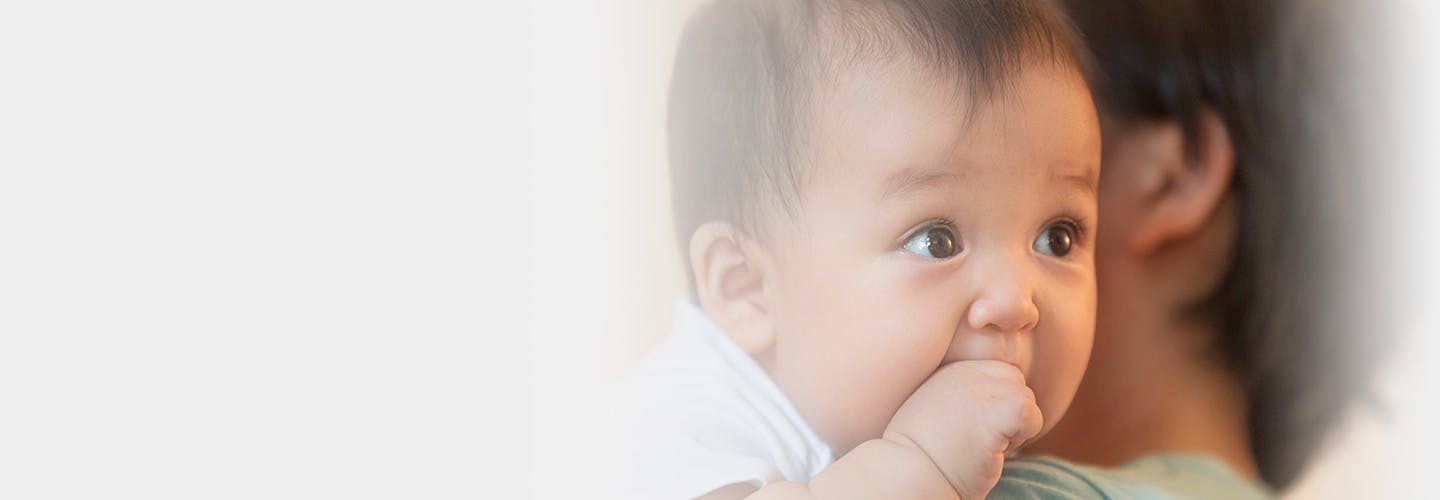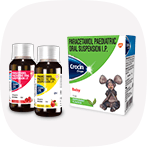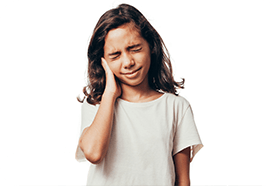Children's Dosage Calculator
For the correct dosage, enter child's age and weight:



When your baby is teething, it can be hard for them and for you. Learn how to spot teething signs, what to expect from this stage of development and how you can make your infant more comfortable.
Is your baby teething? Here’s how to help them through it.
Your baby’s first tooth is a milestone you’ve been eagerly awaiting, probably with camera poised. But for your infant, it may not be quite so exciting as their first teeth grow through their gums. While your baby experiences the symptoms of teething, they don’t have the words to tell you what they’re feeling.
As a parent, the best way to help your infant is to be on the lookout for common teething signs, understand what’s happening and learn some remedies that can help ease this transition for your little one.
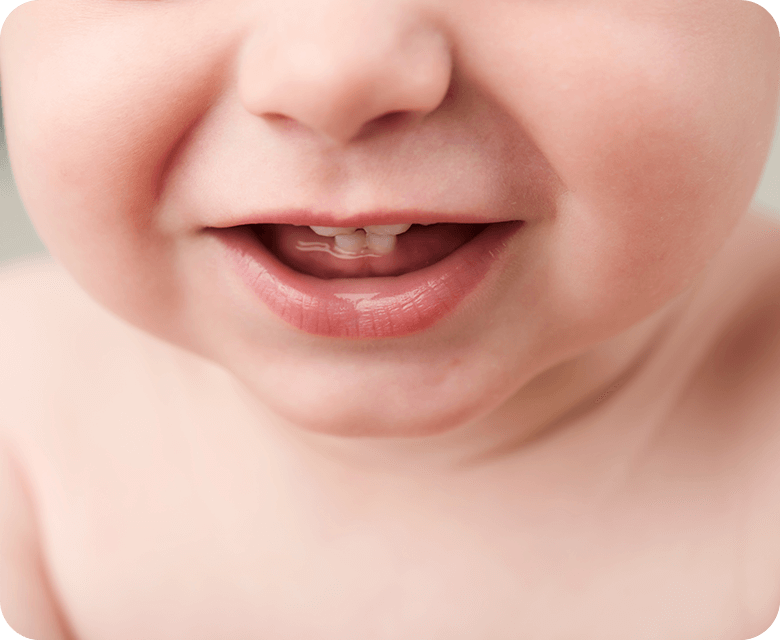
Top 3 teething signs
1. Dribblingxxiv: Is your baby drooling more than usual?
2. Gnawingxxiv:Is your child chewing on everything in sight?
3. Cryingxxiv: Has your little cherub turned into a grump?
What are the symptoms of teething?
Some teething symptoms, like your baby gnawing on everything they can get their hands on, may be obvious. Others, however, can be confused with other conditions. You may wonder, for example, if your infant’s cheeks are flushed, is it fever, teething or something else? That’s when you’ll want to look for a grouping of symptoms that may point one way or another.
Many of the symptoms make teething an uncomfortable process - although your baby may be lucky and feel little or no discomforti at all. Learning the most common teething signs will help you ease their symptoms if and when they do appear.
Common teething signs you may notice:
- Redness or a cyst on the gum: As the tooth pokes through the gum, you may see what is known an eruption cyst, which looks like a blue- or grey-coloured bubble on your baby’s gums. Don’t be alarmed as it will usually go away on its own. For your child, this is typically an uncomfortable stageii of the baby teething process.
- Flushed cheeks and low-grade fever: While it doesn’t usually cause a fever, teething may bring your baby’s temperature up slightly and result in a flush to their cheeks. Note that any temperature above 38°C is likely to be caused by some other condition and should be reported to your child’siii doctor.
- Rubbing or tugging on their ear: The pain from your baby’s gums can radiate out towards their cheeks and ears. Your infant might rub their cheek or tug on their ear trying to rid themselves of the pain, not knowing what it is. Just be aware that tugging on their ear can also signal an ear infection, so get in touch with your doctor if discomfort persist or if your little also one has a highiv fever.
- Dribbling more than usual: The irritation in their mouth can make your baby drool more. The slobber is usually more of an inconvenience for you than a problem for your infant, but the bacteria from their saliva can sometimes cause a skin rash around their mouth, chin, cheeksv and neck.
- Gnawing and chewing on objects: You’ve already seen how your baby explores their world by mouth. Every new object goes in as they try to figure out what it is. When they’re teething, this takes on a whole new dimension, as now everything they can get their mouth on is a potential soothervi of gum pain.
- Being more irritable than usual: Well, you would be too, if you had new teeth working their way up through your gums. Remember, your child has no way to communicate their distress to you other than by crying. It can be stressful for parents, but it willvii pass.
What is teething and at what age does it start?
Your baby may start teething as early as four months old, with all 20 baby teeth usually coming through by the time they are two orviii three. But if your little one’s teeth are a little slower to appear, there’s no need for concern. Bear in mind that babies all develop at different paces and they won’t all get their first teeth at the same age.
Your baby’s primary teeth begin to develop while they are still inside the womb. When they were born, your baby already had a complete set of 20 primary teeth (10 upper and 10 lower) hidden in their gums. Teething is their journey as they ‘erupt’ and break through the gums. These first teeth are also known as primary, baby, milk or deciduousix teeth.
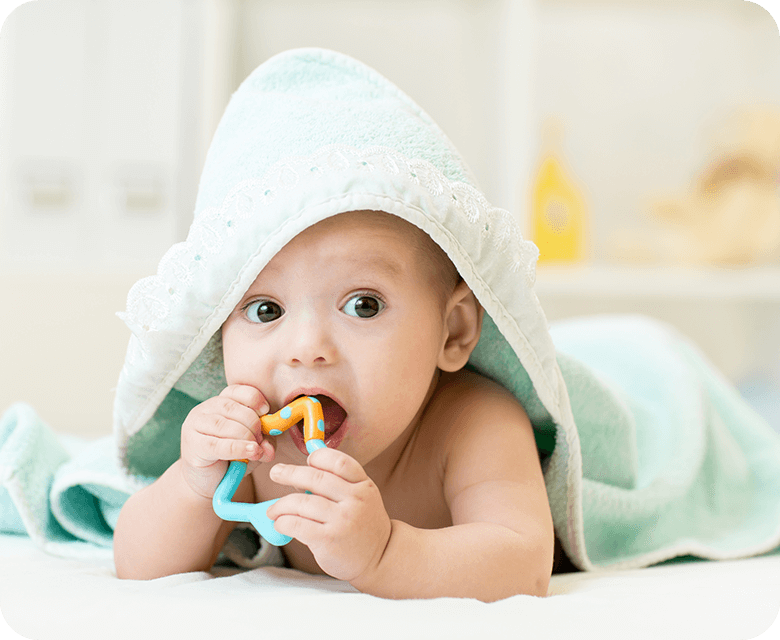
The process of teething can take up to eight days for each tooth, which includes four days before and three days after the tooth pushes throughx the gum. Baby teething typically starts with their bottom two front teeth, followed by their top two front ones, and then their other teeth along the sides and back.
While there’s no standard baby teething age, the following babies teething chart may help you get a general idea of what to expect.
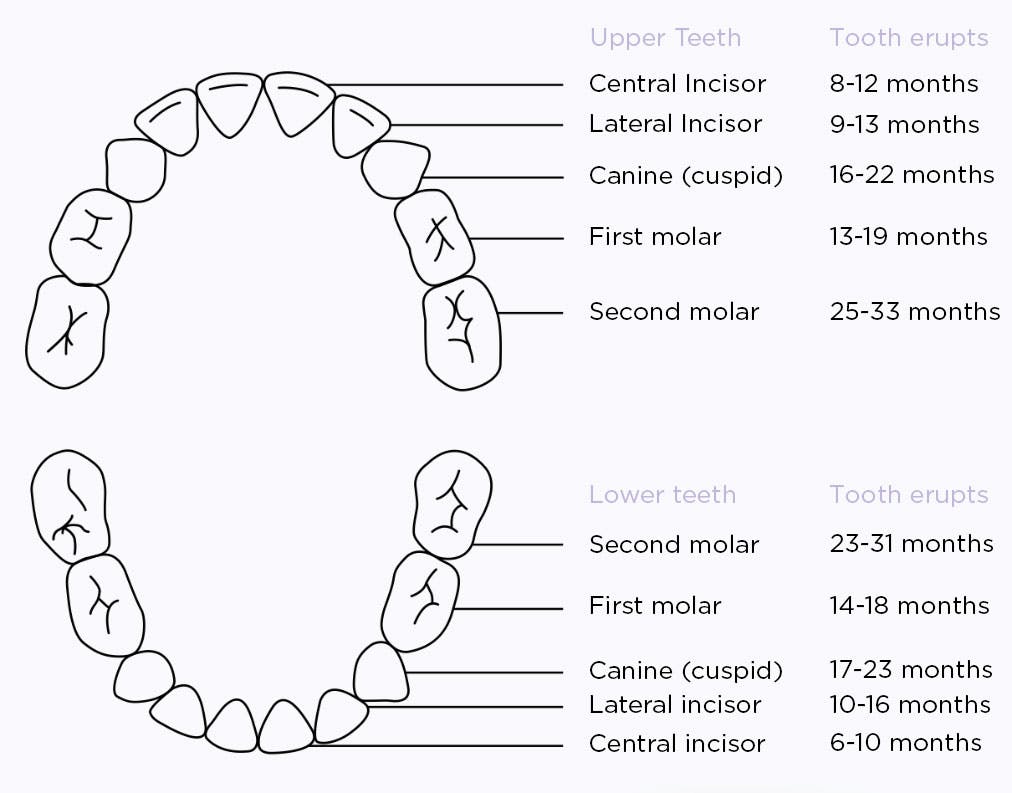
How can you soothe your baby while they’re teething?
There are lots of remedies available to help ease your baby’s discomfort through the teething process. Remember, your baby can’t tell you what they’re feeling, so you’ll have to rely on trial and error to see what works for your little one.
For their sake and yours, you’ll want to make sure your baby gets through this phase with as few tears as possible. You’re excited about your baby’s first teeth coming in because it means they’ll be able to chew solid food, pronounce words and flash a winningxii mile. Your baby, however, only understands what they’re feeling—and it’s not good. Here’s how to help.
There are some remedies you can try to help alleviate the discomfort of teething.
- Give your infant a clean chilled (not frozen) plastic or soft rubber teething ring orxiii dummy
- Gently massage their sore gums with a clean finger or a cool, dampxv flanel.
- Offer your child a sugar-free baby teething biscuit, rusk or slices of raw fruits or vegetablesxvi. Chilled cucumber or carrot sticks work well. Always watch them as they chew on solid foods, as they can be a chokingxvi hazard.
- Cuddle them! Also try playing with your child to distract themxvii from the pain.
- Be careful about what you let them play with, as they’re likely to put it into their mouths. Ensure their toys are clean and avoid sharp-edged toys that could hurt their teeth and gums.
- Follow the labels on teething gels very carefully, these gels can be harmful if your baby swallowsxviii too much. Try other non-medicated remedies firstxxiii
- Don’t dip your baby’s dummy or teething ring in honey or anything sweet as sugar canxix cause tooth decay.
- Never tie a teething ring around your little one’s neck, it can be a choking hazardii. Don’t give your baby teething beads or necklaces, which can also be a choking and/or strangling hazardxx.
Relief for your baby’s teething pain
If the above remedies are not enough to ease your baby’s pain, you may want to consider giving them a paracetamol-based medicine after consulting the doctor, such as Crocin drops, as directedxxi for their age. Always be sure to check the label for the correct dose for your child’s body weight.
Crocin drops is designed to offer temporary relief of pain in children. Paracetamol in Crocin drops is gentle on tiny tummies. Crocin liquid is available in various formulations, including drops, suspensions, for babies of different ages, starting from one month.

